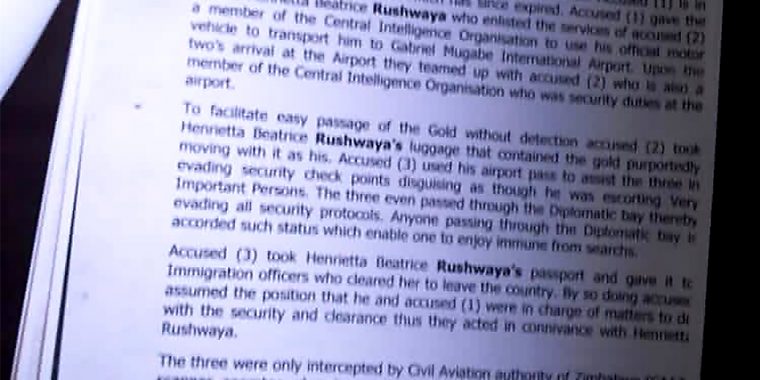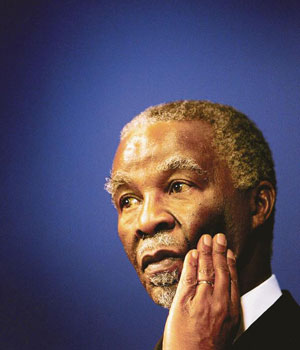 2. Highlights
2. Highlights
Addressing journalists during a post-cabinet briefing on 27 October, the Minister of Information, Publicity and Broadcasting Services, Hon. Monica Mutsvangwa advised that the country would open its borders with neighbouring countries in a phased manner. First the borders will open to private vehicles and pedestrian traffic by the 1st of December. Border operating hours will be between 6 am to 6pm. Curfew hours will be extended to 2200hrs. Minister Mutsvangwa also warned of the possibility of a second wave of outbreaks since community members believe that COVID-19 is weak in warm temperatures.The Deputy Minister of Youth, Sport, Art and Recreation, Tino Machakaire advised that the COVID-19 relief fund is purely a government programme which is non- partisan. The funds are open to all youthful artists or athletes whose source of income was affected by the lockdown period which was aimed at curbing the spread of the disease. Deputy Minister Machakaire further raised concern over the low uptake of the COVID-19 relief fund.Justice, Legal and Parliamentary Affairs Minister Ziyambi Ziyambi advised that the indefinite suspension of by-elections, which were scheduled for December 5, was constitutional because it was taken in terms of the law and according to applicable health environment prevailing in the country. Minister Ziyambi said it was important to note that Zimbabwe was still under COVID-19 restrictions such as night curfew and limiting numbers at gatherings. He said the government had judiciously taken note that by-elections would endanger the lives of people given the prevailing environment. However, the ruling ZANU-PF and opposition MDC Alliance appear to be going ahead with preparations for by-elections despite the recent poll ban imposed by Vice-President Constantino Chiwenga in his capacity as the Minister of Health.Admire Chisi of Zimre Park was arrested after he was discovered to have posed as a medical doctor at Parirenyatwa Hospital for seven months. The press statement reports that this was discovered on 21 October 2020 when Casualty Staff members at the hospital doubted his medical proficiency and made some inquiries. Chisi is alleged to have taken advantage of the national lockdown and collective job action by health practitioners which has seen low staff turnout at public hospitals.Home Affairs Minister Kazembe Kazembe has promised an urgent review of how government will deal with expired learners’ provisional licences. This was after the Vehicle Inspection Department (VID) turned away scores of learner drivers whose provisional licences expired during the COVID-19 lockdown. The VID re-opened on 19 October for the first time since March, when the government announced a lockdown to curb the spread of the virus. Through Statutory Instrument 144 of 2020, the government extended by six months from March 30 the validity of certain documents including learner’s licences, defensive driving certificates and public service vehicle driver retests. The statutory instrument states: “If the period of validity of a learner’s licence expires after the 30th March 2020, its validity shall be automatically extended from the date of expiry to a date ending 180 days thereafter, or to the date when the national lockdown ends, whichever is the earlier date. The period of extension excludes those whose provisional licences expired between the 1st and the 19th of October 2020.
The Passenger Association of Zimbabwe (PAZ) has condemned the state of most conventional buses operating under the ZUPCO franchise, describing them as unroadworthy and death traps to the commuting public. At the height of escalating private commuter omnibus fares, ZUPCO integrated old conventional buses to operate as urban public transporters after private operators were banned by the government following the COVID-19 pandemic. PAZ has blamed the ageing ZUPCO fleet and poor maintenance for the majority of accidents recorded in most cities across the country.
The Cross Border and Domestic Traders Association has alleged that informal traders are bearing the brunt of the current nationwide lockdown. According to Anne Watyoka, convenor of the informal traders stated that their membership cannot move freely under the current lockdown conditions, especially those who rely on cross border buying and selling. Only air transportation is currently available. She further added that the current COVID-19 test certificates were beyond the reach of many which was further worsening the situation in the sector. Currently, a PCR test in Zimbabwe costs USD60 which is more than the cost of a bus ticket to Johannesburg from Harare.
The government
increased the COVID-19 cash transfers to vulnerable households to ZWL1,000 (USD12) per month from a paltry ZWL300 (USD3,60). Government has further mulled its intention to extend the intervention beyond December as indications are that the pandemic will stretch over into the coming year. Initially, government had pegged the COVID-19 cash transfers at ZWL180 (USD2) for the period between March and December.
3. Partisan Distribution of food
It has been alleged that some ZANU-PF supporters vying to be chairpersons in the party’s district coordinating committees are reportedly diverting government food aid meant for vulnerable families and selectively donating it to ZANU-PF supporters ahead of the elections. Reports have been received from Hurungwe, Kariba, Chegutu, and Kadoma.
4. Attack on journalists
The Special Anti-Corruption Unit (SACU) on 29 October 2020 in Harare arrested journalists Takunda Mandura of OpenParly, Munashe Chokodza, of 263Chat, and Herald reporter, Blessing Chidhakwa, together with student journalist, Rukudzo Musari. The arrested journalists were covering a Harare City Council meeting when officers from the Zimbabwe Anti-Corruption Commission (ZACC) arrested them. ZACC was targeting Harare City Council Councillors on allegations of corruption. The journalists were later released without charge however, they were detained for more than 3 hours.
5. Summary of Violations
The table below summarises COVID-19 related human rights violations documented by the Forum Secretariat and Forum Members from 30 March to 29 October 2020.
| Nature of Violation | Number of Victims | Location |
| Assaults and Torture including dog bites | 280 | Harare, Zvishavane, Masvingo, Bulawayo, Wedza, Chinhoyi, Zaka, Gweru, Chitungwiza, Bindura, Nembudziya, Chiredzi, Marondera, Mutoko, Chivi, Bikita, Zvishavane, Mvurwi, Mutare, Marondera, Beitbridge, Domboshava, Wengezi , Binga, Mt Darwin |
| Attack on Journalists | 20 | Mutare, Gweru, Chinhoyi, Harare, Chiredzi, Masvingo, Beitbridge, Bulawayo |
| Arrests | 529 | Masvingo, Gokwe, Gweru, Bulawayo, Chinhoyi, Hwange, Harare, Magunje, Lupane, Norton, Bikita, Mutasa, Chitungwiza, Nkayi, Makoni, Chipinge, Beitbridge, Lupane, Tsholotsho, Mwenezi, Guruve, Hwange, Murwi, Kwekwe, Chinhoyi, Chiredzi |
| Abductions | 12 | Chitungwiza, Bulawayo, Harare, Gweru, Hopley |
| Gunshots | 2 | Chitungwiza, Bulawayo |
| Extra-judicial Killing | 1 | Hurungwe |
| Raids | 8 | Chitungwiza, Bulawayo, Harare, Mkoba Gweru |
| Displacement | 57 | Banket, Harare |
| Harassment, threat, intimidation | 2 | Harare |
| Partisan Distribution of food | 4 | Hurungwe, Kariba, Chegutu, and Kadoma |
6.0 Conclusion
The Forum remains extremely concerned that at the state of transportation in the country and calls upon the responsible authorities to review the restrictive measures imposed on private combis and bus operators. This will relieve transport problems for people who need to travel to and from work and will also ensure that private transport operators resume their business which they depend on for their livelihoods.
The Forum notes with concern the incident of an unqualified individual posing as a doctor at Parirenyatwa Hospital. This is a very worrying development that should be thoroughly investigated. The Forum calls upon the police to investigate this issue and ensure that Mr Admire Chisi is held accountable for his actions. It is also necessary for the hospital to carry out an investigation into how Mr Admire Chisi got to be employed at the hospital without the requisite qualifications and the necessary remedial action must be taken. It is key for the Parirenyatwa Group of Hospitals to take full responsibility for this regrettable incident which put the lives of patients in danger and ensure that the necessary protocols are put in place to prevent such incidents in the future.
Despite Zimbabwe having opened airports for local, regional and international travel, borders still remain closed. The Forum therefore recommends that the government urgently work towards opening borders given that the majority of informal traders (cross border traders) have not been productive for over 213 days now.

















